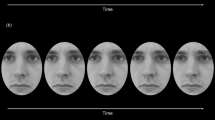Abstract
This paper considers the importance of the body for self-esteem, communication, and emotional expression and experience, through the reflections of those who live with various neurological impairments of movement and sensation; sensory deafferentation, spinal cord injury and Möbius Syndrome (the congenital absence of facial expression). People with severe sensory loss, who require conscious attention and visual feedback for movement, describe the imperative to use the same strategies to reacquire gesture, to appear normal and have embodied expression. Those paralysed after spinal cord injury struggle to have others see them as people rather than as people in wheelchairs and have been active in the disability movement, distinguishing between their medical impairment and the social induced disability others project onto them. Lastly those with Möbius reveal the importance of the face for emotional expression and communication and indeed for emotional experience itself. All these examples explore the crucial role of the body as agent for social and personal expression and self-esteem.
Similar content being viewed by others
Notes
Speech and eating were affected during the acute illness, but then recovered.
This need to embody emotional communication and to present himself as a ‘normal’ person in his terms was also seen in subject GL who has a similar condition. Independently she relearnt, consciously, gesture. When GL and IW met conversation was difficult because one is English speaking only, the other French. So they sat with a translator between them. As they spoke each gestured—similarly and rather more expansively than usual. At the end of each speech act IW looked down at his hands to fold them neatly in his lap. Each time he began again he glanced down again to unfold his arms and set them free to start gesturing once more.
The terms quadriplegia and tetraplegia are interchangeable, and mean someone with paralysis or weakness of all four limbs. Paraplegia refers to weakness or paralysis of the legs. To complicate matters paraplegia can also be used as a generic term for all those with spinal cord injury.
People with Möbius find it difficult to close their lips or their eyes, as well as a myriad of other problems (Cole and Spalding 2008).
These and other parts on Möbius are taken from Cole and Spalding 2008.
Sue Savage-Rumbaugh once told me that when she is in the shared environment with the bonobo she is joint rearing with the bonobo’s birth parent, that any move she makes is interpreted by the bonobos. They seem far more attuned to postural movement than most humans. Possibly with the encephalisation of emotional communication through the face, and of course through language, we have become less sensitive to body communication. As for the legs being less used in communication, the relevant word is ‘less,’ as any woman in a short skirt, - or man observing this display -will agree.
References
Cole, J. (1995). Pride and a daily marathon. Cambridge, MA: The MIT.
Cole, J. (1998). About Face. Cambridge, MA: The MIT.
Cole, J. (2004). Still Lives. Cambridge, MA: The MIT.
Cole, J., & Spalding, H. (2008). The invisible smile. Oxford: Oxford University Press.
Cronemberger, M. F., Castro-Moreira, J. B., Brunoni, D., et al. (2001). Ocular and clinical manifestations of Moebius Syndrome. Journal of Pediatric Ophthalmology & Strabismus, 38, 156–162.
Damasio, A. (1999). The feeling of what happens. New York: Random House.
Gallagher, S. (2008). How the body shapes the brain. Oxford: Oxford University Press.
Gillberg, C., & Steffenburg, S. (1989). Autistic behaviour in Moebius Syndrome. Acta Paediatrica Scandinavica, 78, 314–316.
Johansson, M., Wentz, E., Fernell, E., et al. (2001). Autistic spectrum disorders in Moebius Syndrome: a comprehensive study of 25 individuals. Developmental Medicine & Child Neurology, 43, 338–345.
McNeill, D. (2005). Gesture and thought. Chicago: University of Chicago Press see chapter 8.
Meltzoff, A., & Moore, M. K. (1977). Imitation of facial and manual gestures by human neonates. Science, 198, 75–78.
Merleau-Ponty, M. (1962). The phenomenology of perception. Illinois: Northwestern University Press P62.
Murphy, R. (1987). The body silent. New York: Henry Holt.
Oliver, M. (1990). The politics of disablement. London: Macmillan.
Verzijl, H. T. F. M., Van Es, N., Berger, H. J. C., Padberg, G., & van Spaendonck, K. P. M. (2005). Cognitive evaluation in adults patients with Moebius Syndrome. Neurology, 252, 202–207.
Vygotsky, L. (1986). Thought and language. Cambridge, MA: The MIT.
Author information
Authors and Affiliations
Corresponding author
Rights and permissions
About this article
Cite this article
Cole, J. Impaired embodiment and intersubjectivity. Phenom Cogn Sci 8, 343–360 (2009). https://doi.org/10.1007/s11097-009-9119-5
Received:
Accepted:
Published:
Issue Date:
DOI: https://doi.org/10.1007/s11097-009-9119-5




